Food Noise: What It Is and 10 Ways to Quiet It
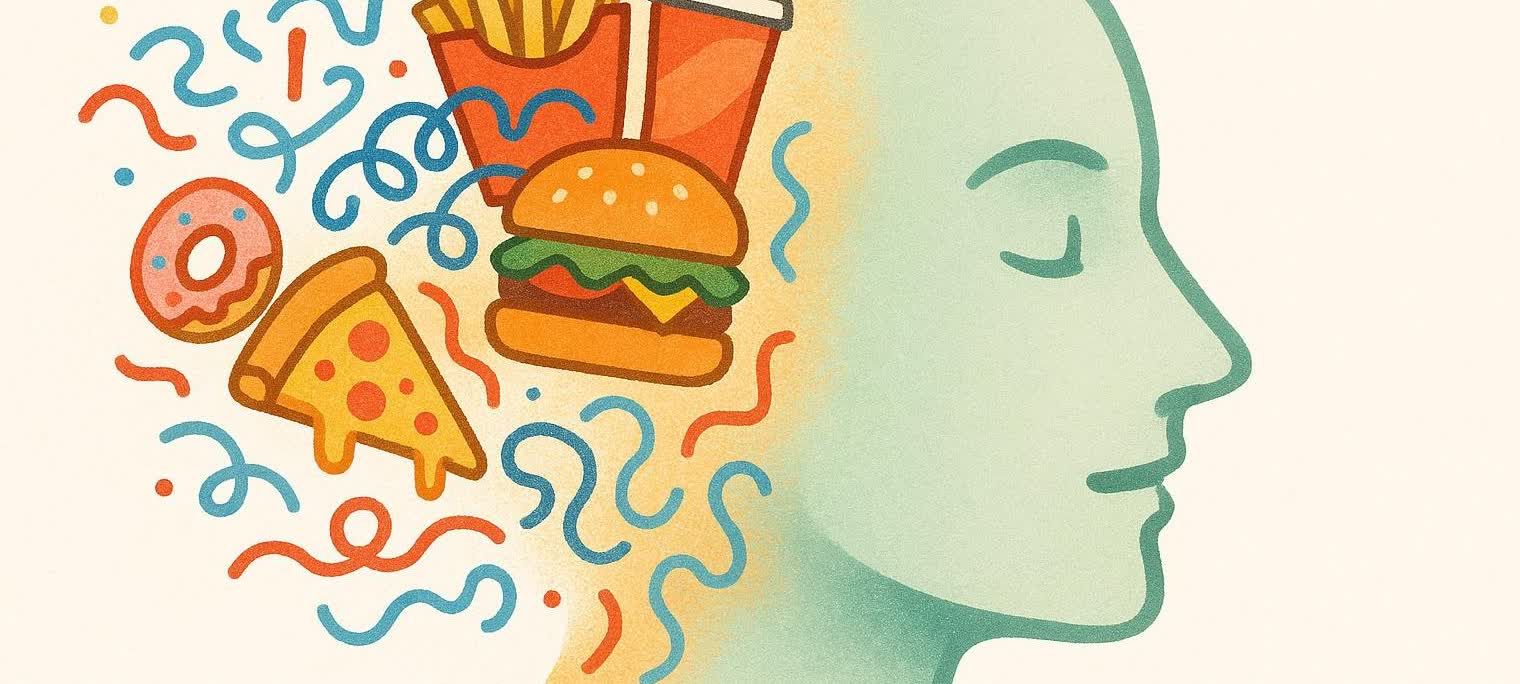
Food Noise: What It Is & 10 Ways to Quiet It
Feeling like thoughts about food are always “on” — even right after a meal? That mental chatter has a name: food noise. This guide explains what it is, why it shows up, and practical, science-backed ways to turn the volume down — with clear next steps you can start today.
Quick answer: Food noise means persistent, intrusive thoughts about food that feel unwanted and distracting — different from normal hunger or a passing craving. You can reduce it by stabilizing meals, managing stress and cues, practicing mindful eating, and, for some, discussing GLP-1 medications with a clinician.
What is “food noise”? (quick definition)
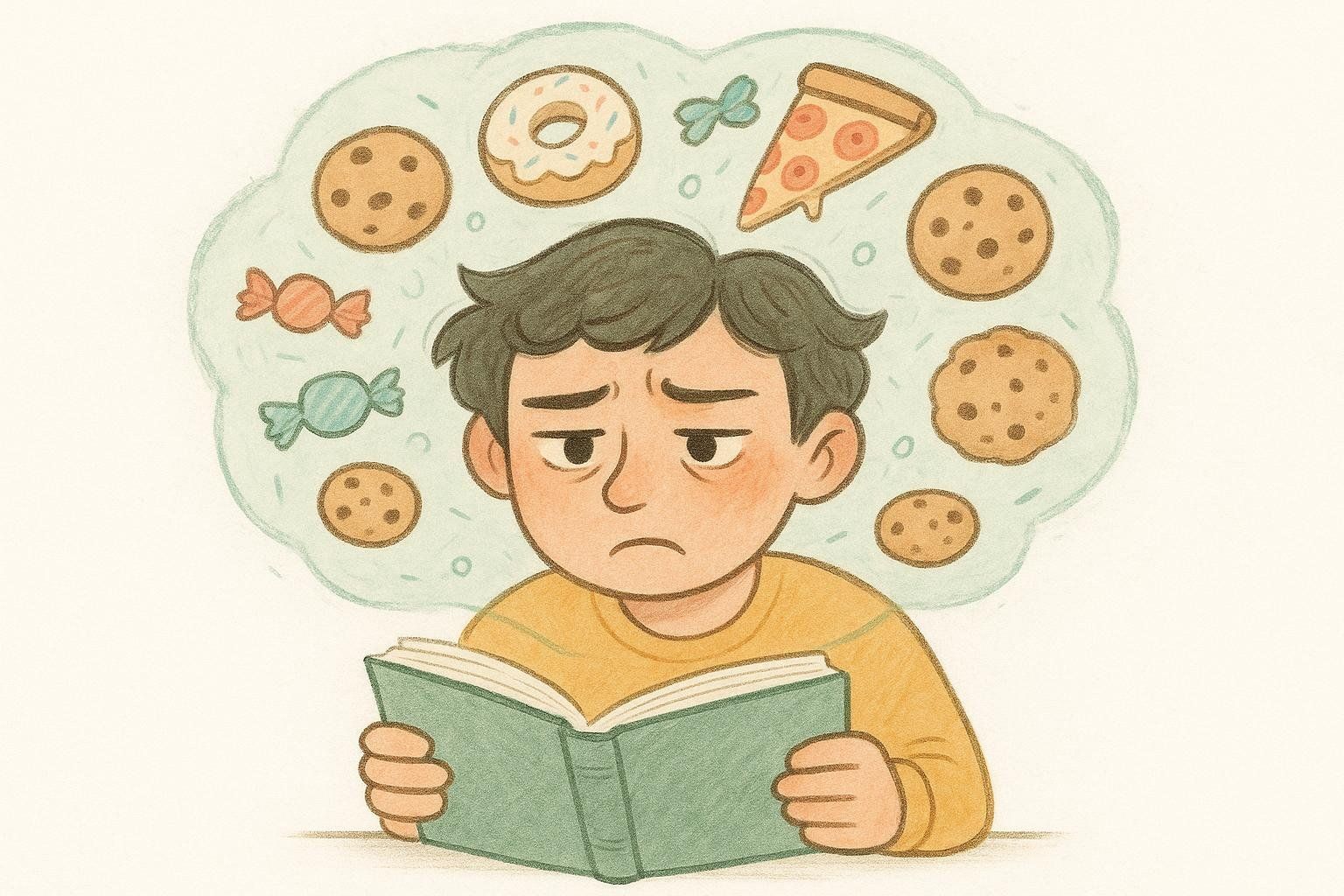
Food noise is the persistent, unwanted mental chatter about food and food-related decisions that feels intrusive and dysphoric — different from normal hunger signals or fleeting cravings (proposed definition in Nature). Researchers describe it as heightened food cue reactivity: when internal cues (hunger, emotions) and external cues (sights, smells, ads) trigger attention and motivation toward food, often beyond biological need (CIRO model overview).
Food noise vs. true hunger vs. cravings
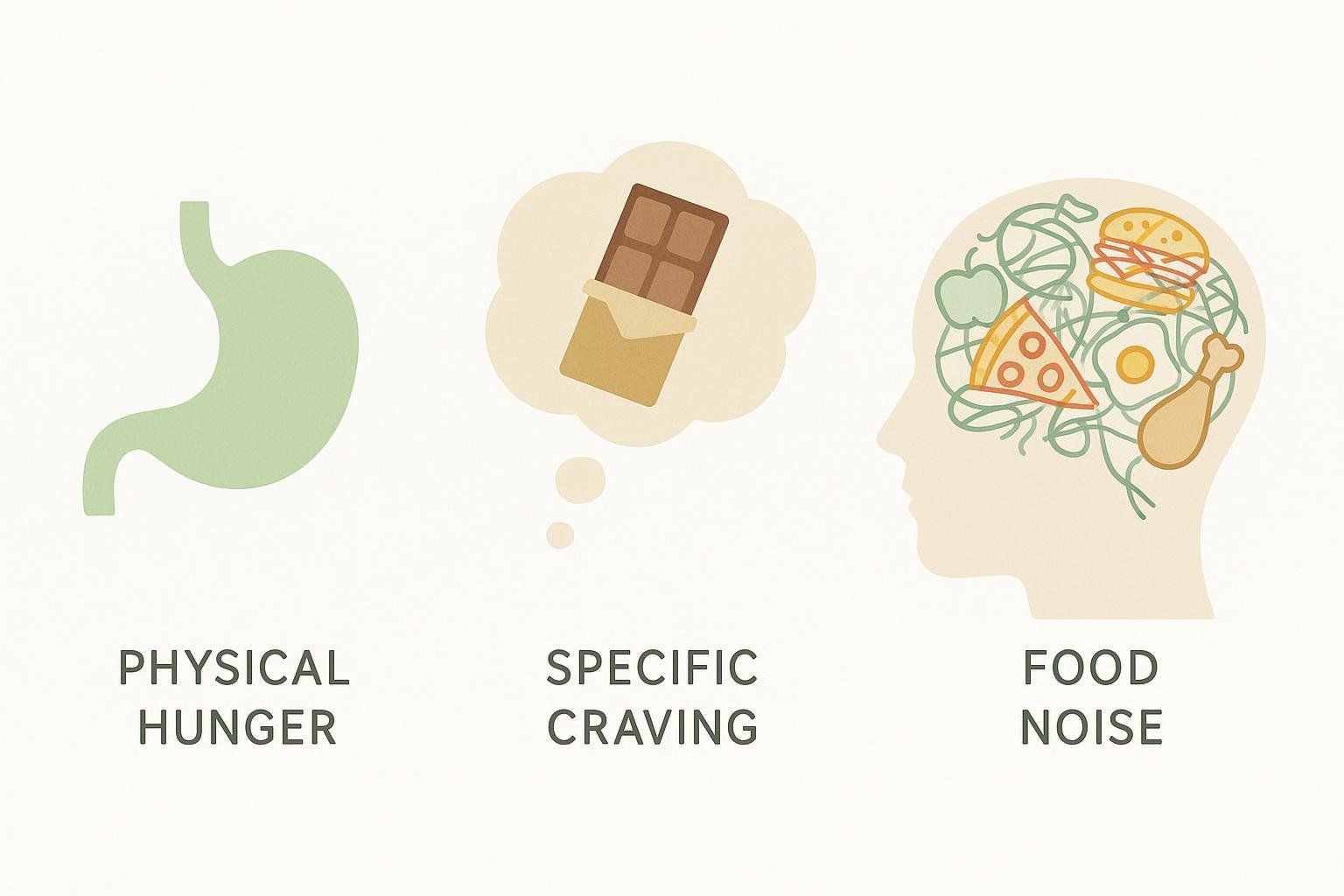
- True hunger: builds gradually; shows up in the body (stomach growls, low energy, irritability); eating a balanced meal resolves it (Children’s Hospital Colorado explainer).
- Craving: a specific desire (e.g., chocolate) that may pass if you wait or distract; often context- or cue-driven (food cue reactivity research).
- Food noise: constant, intrusive thoughts about food or rules about eating, often unrelated to when you last ate; it can disrupt work, school, and mood (Nature perspective).
Why does food noise happen?
Food noise isn’t a willpower issue. It’s the intersection of your biology, psychology, and environment.
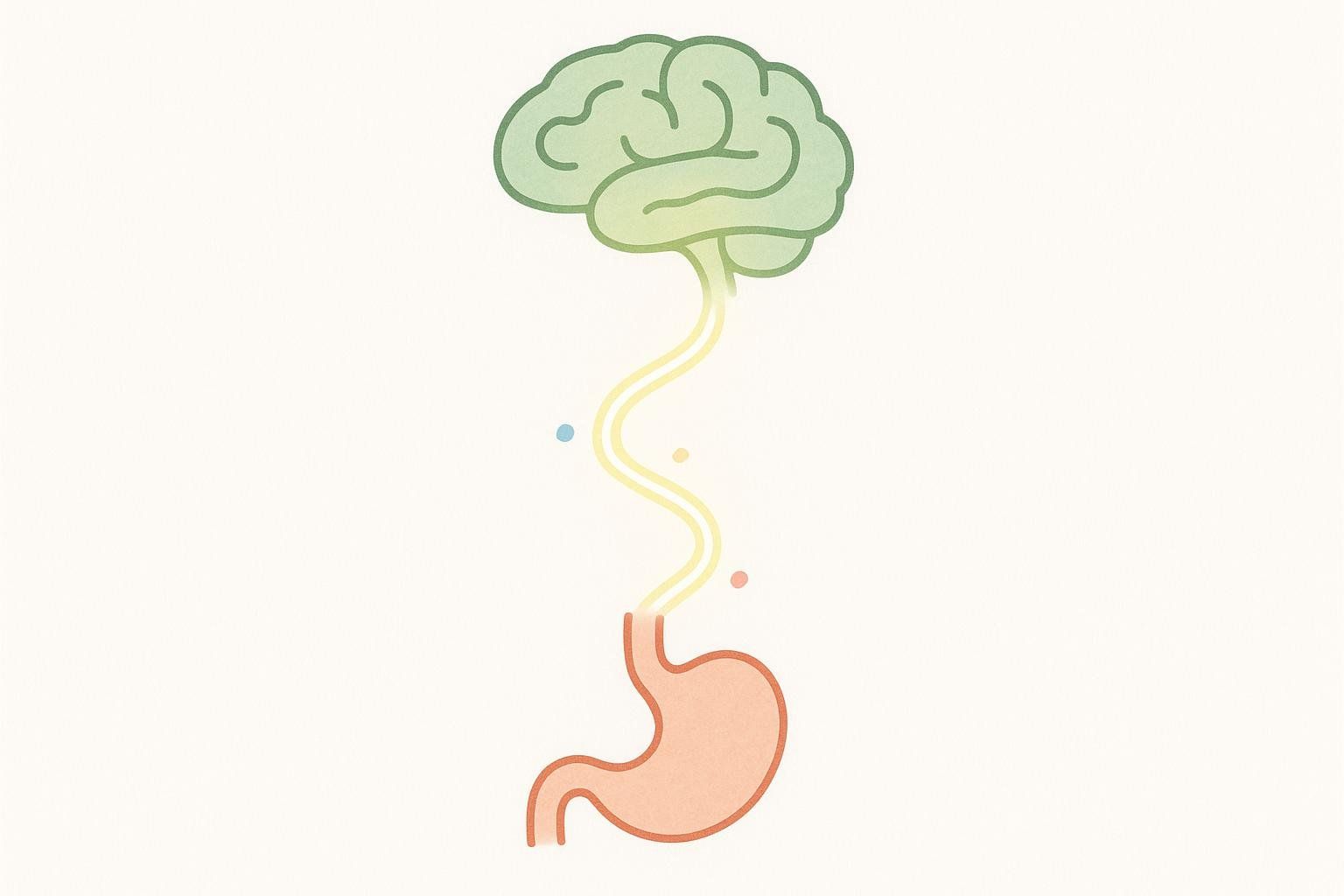
- Gut-brain signaling: Hormones like GLP-1, PYY, and CCK help you feel full, while ghrelin stimulates appetite. These signals interact with the brain’s reward and homeostatic centers that track energy needs and shape how much attention food grabs (gut-brain axis review).
- Stress and cortisol: Chronic stress elevates cortisol, which can increase appetite and preference for calorie-dense “comfort” foods and amplify cravings (Harvard Health summary).
- Cue reactivity (CIRO model):
- Cues show up — like seeing a snack or smelling popcorn.
- Your brain weighs those cues based on mood, sleep, time of day, and habits.
- The cues feel more or less compelling (attention narrows, body arousal rises).
- Compelling cues drive decisions — which can feel like relentless food noise.
- Neurodiversity and development: For some kids and neurodivergent individuals (e.g., ADHD, autism), rigid routines, sensory preferences, and dopamine-seeking can intensify food-related thoughts (Children’s Hospital Colorado).
- Diet culture and restriction: Restrictive rules can paradoxically increase preoccupation with food and fuel rumination (Nature perspective).

Self-assessment: How loud is your food noise?
Use the quick check below to gauge current noise levels. It’s not a diagnosis — just a starting point for self-awareness.
For each statement, rate how often it has applied to you over the past two weeks using the scale (0=Never, 1=Rarely, 2=Sometimes, 3=Often, 4=Almost always).
| Statement | Score (0-4) |
|---|---|
| 1) I think about food even when not physically hungry. | |
| 2) Food thoughts disrupt my focus. | |
| 3) I feel pressure to follow strict food rules. | |
| 4) Food cues (sight, smell, ads) hijack my attention. | |
| 5) I feel guilt or shame after eating. | |
| 6) I eat to cope with stress or boredom. | |
| 7) I plan my day around food or worry about running out. | |
| 8) I miss fullness cues until I’m overly full. | |
| 9) After eating, I still feel “mentally hungry.” | |
| 10) Food noise makes me avoid social events. |
How to interpret your results:
- If you answered “Often” or “Almost always” to several statements, your food noise may be more persistent right now — consider practicing the strategies below consistently and reaching out to an RD, therapist, or clinician if it’s impacting daily life.
- If you answered “Sometimes” across many items, you may benefit from regular meals, mindful eating reps, and light stress management for a few weeks, then reassess.
- If most answers were “Rarely” or “Never,” keep reinforcing supportive habits and monitor for changes during stressful periods.
10 science-backed ways to quiet food noise
Start with 1-2 tactics, build on your successes for 14 days, then reassess.
-
Eat at regular intervals
Aim for regular meals with protein and fiber to stabilize appetite hormones and reduce cue reactivity; erratic eating can increase noise (gut-brain signaling basics). -
Build satisfying plates
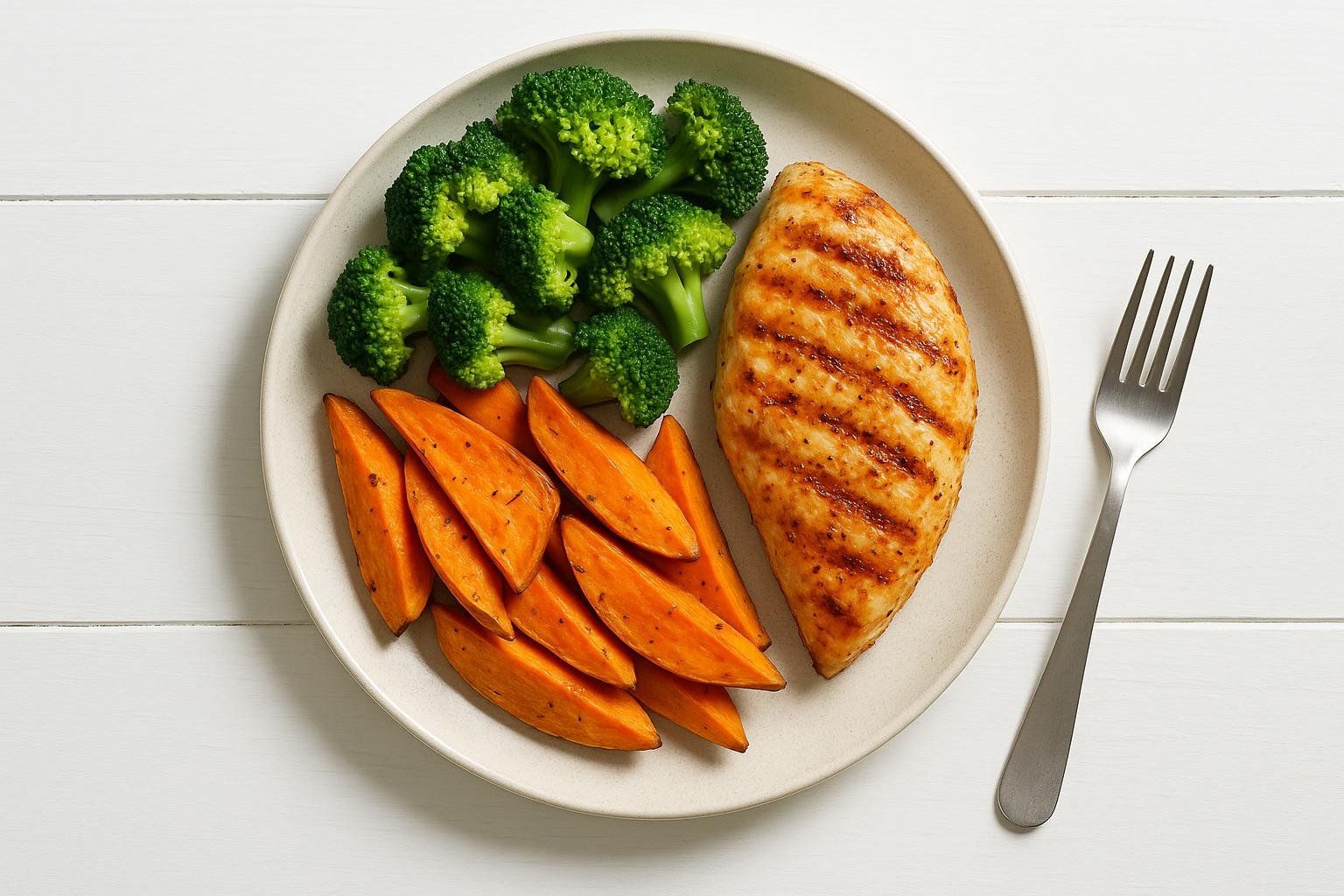
Combine protein, produce, and a quality carb or fat. This supports fullness signaling (GLP-1, PYY, CCK) and steadier energy (satiety hormones overview).
- Practice 5-minute mindful eating

Before the first bite: pause, breathe, label hunger (stomach/energy/mood), then eat with all five senses for the first three minutes — skills that reduce emotional and external eating in trials (SHINE RCT; primary care RCT). Our guide to mindful eating offers a fuller walkthrough to build this skill.
-
Schedule “urge surfing”
When a craving spikes, set a 10-minute timer and do a neutral task (walk, shower, dishes). Most urges rise and fall like waves; riding them builds confidence (cue reactivity review). -
Cut stress at the source (and in the moment)
- Source: lower overload (fewer tabs, clearer to-do’s, boundaries).
- Moment: 60-second box breathing or a 5-minute brisk walk — these tactics help manage the connection between stress and weight gain (Harvard Health explainer).
- Tidy your food environment
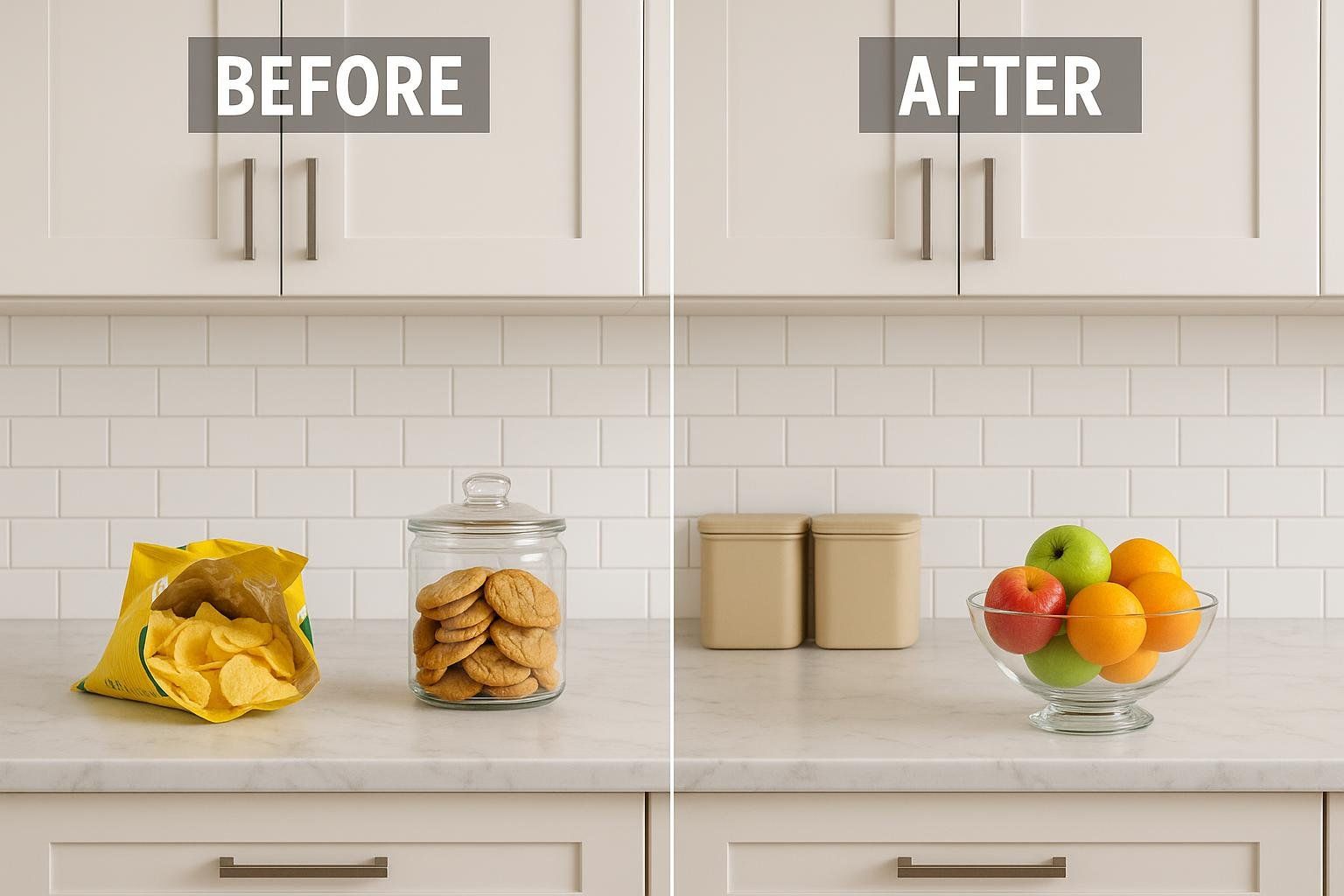
Make the easy choice the helpful choice: keep protein-forward snacks visible, store sweets out of sight, pre-portion treats — simple cue management reduces reactivity (CIRO model review).
- Prioritize consistent sleep

Short sleep shifts appetite hormones and heightens reward sensitivity to high-calorie foods; protect a consistent sleep window (gut-brain axis review).
-
Move daily (especially when stressed)
Even short walks can blunt stress and improve appetite regulation via gut-brain and reward circuitry (mechanisms overview; Harvard Health explainer). -
Avoid chronic restriction
Overly rigid rules can increase preoccupation with food; try flexible structure instead (planned treats, balanced meals) (Nature perspective). If sugar cravings are a frequent trigger, see our playbook: How to Stop Sugar Cravings. -
Train your attention with a 2-minute check-in
Set a reminder before common trigger times (e.g., 3 pm). Ask: What cue am I noticing? What does my body say (hunger 0-10)? Which action helps right now (protein + fiber snack, glass of water, 5-minute walk, brief breathing)? Repeat daily for 14 days to build the skill.
Do GLP-1 medications quiet food noise?
Many patients report that GLP-1 receptor agonists (e.g., semaglutide) reduce appetite and make food thoughts less intrusive — consistent with their known effects on satiety signaling and reward pathways (GLP-1 appetite review; systematic review on appetite and gastric emptying; Scientific American overview). These drugs mimic the GLP-1 hormone, slowing gastric emptying and sending “you’re full” signals via vagal and central pathways; they also appear to modulate dopamine-based reward circuits, which may reduce the salience of cues (appetite mechanisms review).
Key considerations for GLP-1 medications
- Suitability, dosing, and safety require clinician guidance; avoid gray-market or compounded products without medical oversight. See our guide to compounded semaglutide safety and legality.
- Preserve lean mass with resistance training and adequate protein if you’re losing weight; here’s how to prevent lean mass reduction.
- Compare options with our overview of Mounjaro vs. Ozempic.
A Simple Food Noise Tracker You Can Print
Copy this into a notes app or print it. Log brief entries for 7-14 days.
| Date/Time | Where/What cue? (sight/smell/scrolling/stress) | Body signals (hunger 0-10) | Emotion(s) | Action I tried | Result after 15-30 min |
|---|---|---|---|---|---|
| Tue 3:10 pm | Slack message + candy bowl on desk | 3 | Stressed, distracted | 5-minute walk + protein yogurt | Noise dropped to 1; skipped candy |
| Thu 8:45 pm | TV food ads | 2 | Bored | Chamomile tea + 10-minute stretch | Noise faded; no snack |
Tip: Review patterns weekly. Match triggers to the tactics above (e.g., if late-afternoon noise spikes, add a 3 pm protein-rich snack and a 5-minute walk).
When to get extra support
- Food thoughts feel out of control or are linked with restriction, purging, or frequent loss of control.
- Food noise significantly impacts mood, school/work, or relationships.
- For kids/teens: constant requests for food, sneaking food, or anxiety about food/weight — a pediatrician, RD, or therapist can help (Children’s Hospital Colorado).
How BodySpec can help you track progress
Quieting food noise often improves energy, mood, and decision-making — and many people also see shifts in body composition over time. A BodySpec DEXA scan accurately tracks fat mass, lean mass, and visceral fat so you can see whether your strategies are moving the needle, especially if you’re combining lifestyle changes with medications.
- Why DEXA? It’s the gold standard for assessing body composition change with high repeatability.
- A DEXA scan is also an effective tool for monitoring changes in visceral fat.
Book a scan, compare results every 8-12 weeks, and adjust your plan with data.
FAQs
Is food noise the same as binge eating?
No. Food noise refers to intrusive thoughts about food; binge eating involves episodes of eating unusually large amounts with a sense of loss of control. Food noise may coexist with disordered eating for some people — that’s a cue to involve a clinician (Nature perspective).
What triggers food noise most?
Common drivers include stress, sleep loss, restrictive rules, and exposure to cues (sights, smells, ads), which amplify food cue reactivity (Harvard Health explainer; CIRO model review).
Does ADHD cause food noise?
ADHD doesn’t “cause” it, but dopamine-seeking, sensory preferences, and routine rigidity can intensify food-related thoughts in some neurodivergent people, including kids (Children’s Hospital Colorado).
How long until strategies start working?
Many people notice change within 1-2 weeks of steady practice (regular meals, mindful eating reps, stress micro-breaks), with continued gains over 4-8 weeks as habits stick (SHINE RCT; primary care RCT).
Putting it into practice
Pick one tactic above and apply it today. Then log your next 10 episodes with the tracker. If you want objective feedback on how your changes are reshaping your body — fat, muscle, and visceral fat — book a BodySpec DEXA scan and let the data guide your next step.


